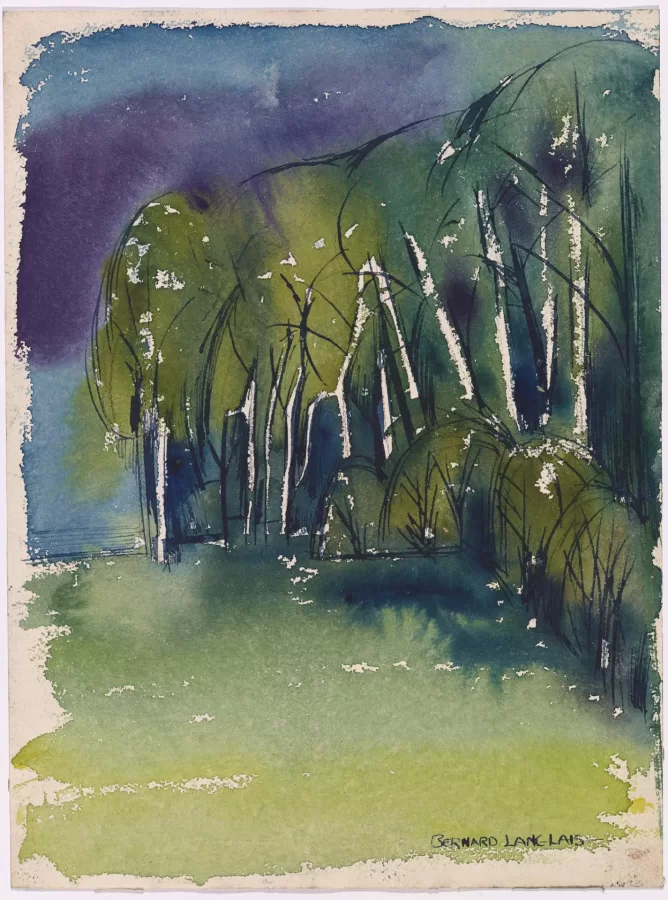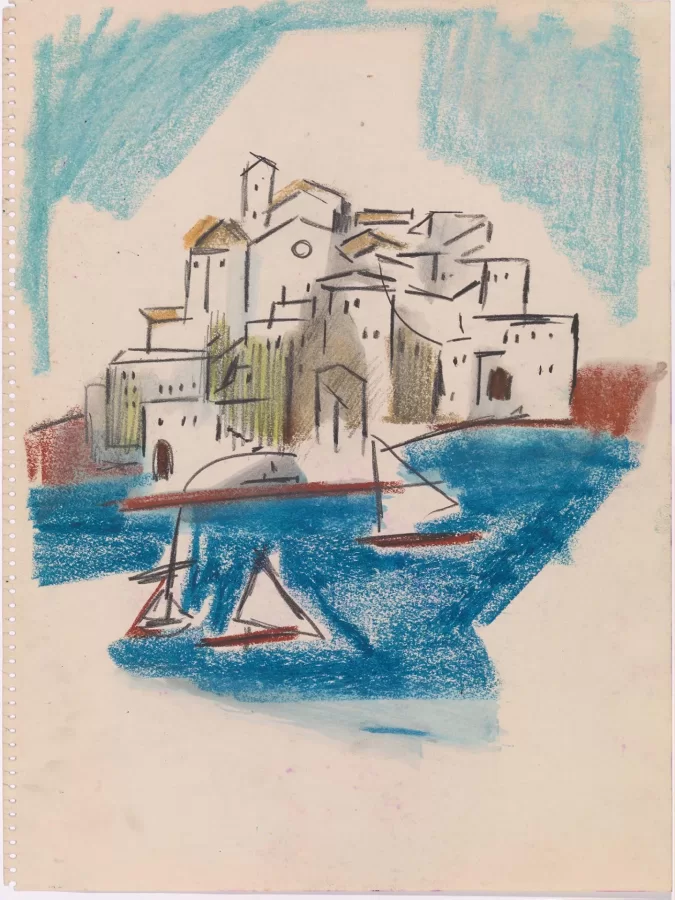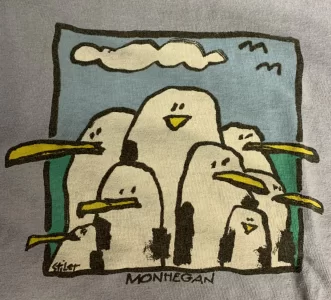Delving into Bernard Langlais’ Works on Paper
My work at the Bates College Museum of Art started as a way to gauge my interest in the field as a future career. I was, and still am to a degree, uncertain about what I want to do after college, if I want to work in a museum, an archive, or a library of some sort. Working at the museum as a Collections Management Intern has been an incredible experience that has opened my eyes to the inner workings of a museum and what happens behind the scenes.
I have primarily been working on cataloguing our collection of Bernard Langlais’ works on paper that were gifted to Bates by Colby College and the Kohler Foundation in 2013. Working with these pieces has been fascinating, both because of the style and content, and because I get the chance to work with these pieces hands-on and learn the process of cataloguing through it.
My work consists of going through the pieces, re-checking and recording details like the dimensions and medium, examining the pieces for damage and making a conservation report, and uploading high-quality photos onto our database. The first thing I learned was how to properly handle the pieces which is especially important with works on paper because they can be damaged so easily.
Langlais started his career in drawing and painting. His style is described well by the Langlais Art Trail website: “Langlais developed a modernist painting style characterized by landscapes and still lifes with bold colors and flattened perspectives, while also experimenting with hard-edge abstraction and painterly expressionism.” While he was very successful with his paintings, he discovered a passion for working with wood and is perhaps best known for his large wooden sculptures of animals.
The focus on his 3D works means his works on paper are often overlooked which provides an amazing opportunity for people, like me, to get to work with his art. I have loved getting to work with his pieces and see his varieties of art styles. The pieces I worked with ranged from still lifes to abstract pieces to landscapes, all showing his bold, modernist style.
My personal favorite pieces were two of his landscapes, partly because of his use of bright colors and bold lines, as well as the calm and hopeful feelings that they give me.


The first piece is a watercolor painting of a forest scene. While I know nothing for certain, the precise white shapes for the trunks of the trees makes me think of wax resist or a similar substance to protect the section from the bleeding of the paint. I love how the scene does not go all the way to the edges of the paper. I also love the gradient of color in the foreground and the use of the dark, peacock blue color for the shadows.
The second piece, which depicts a small seaside town with a group of sailboats below it, has a fascinating use of color and negative space as there is a large white space left between the blue sky and the top of the buildings. The sea has a similar treatment as the blue of the water hugs the buildings but only extends just beyond the furthest ship. Due to the similarity in their shapes, the hole in the sky and the chunk of sea seems to be connected, as though the sea is a piece of fallen sky.
The second piece immediately captured me when I came across it, partly because of the interesting composition, but also because it reminded me of a depiction of a seaside town in Greece. This sent me down a bit of a rabbit-hole as I tried to figure out where Langlais had painted it and if he had ever gone to Greece. Eventually, I discovered that he had received a Fulbright Scholarship to go and study the paintings of Edvard Munch in Oslo, Norway. And after a lot more searching, I found that the buildings in the painting resemble Norwegian architecture from the 1950s, which answered my question!
Through this, I was also able to identify what the composition reminded me of. To me, it made me think of a shirt that my dad has had for most of my life, the design of which was made by fellow Maine artist, Mike Stiler. The shape of the collection of the buildings reminded me of the shape of the group of seagulls and I find that charming.

I have loved getting to handle and study the works of Bernard Langlais, an artist that I did not know prior to this internship. Not only did I find a connection with some of his pieces, but I got the chance to learn about conservation and cataloguing which was very interesting. This internship has been an amazing opportunity that has given me a good feeling for what I want to pursue after college, and I hope to work in the museum as an intern again next year!
Reference:
“Bernard Langlais Biography.” Langlais Art Trail. Colby College Museum of Art and the Kohler Foundation Inc. Accessed December 2, 2021. http://langlaisarttrail.org/biography/.
Stiler, Mike. Mike Stiler studio. Accessed December 2, 2021. http://mikestilerart.com/Site/Welcome_1.html.
Olivia Eaton ’23
Classical Medieval Studies with a minor in Gender and Sexuality Studies